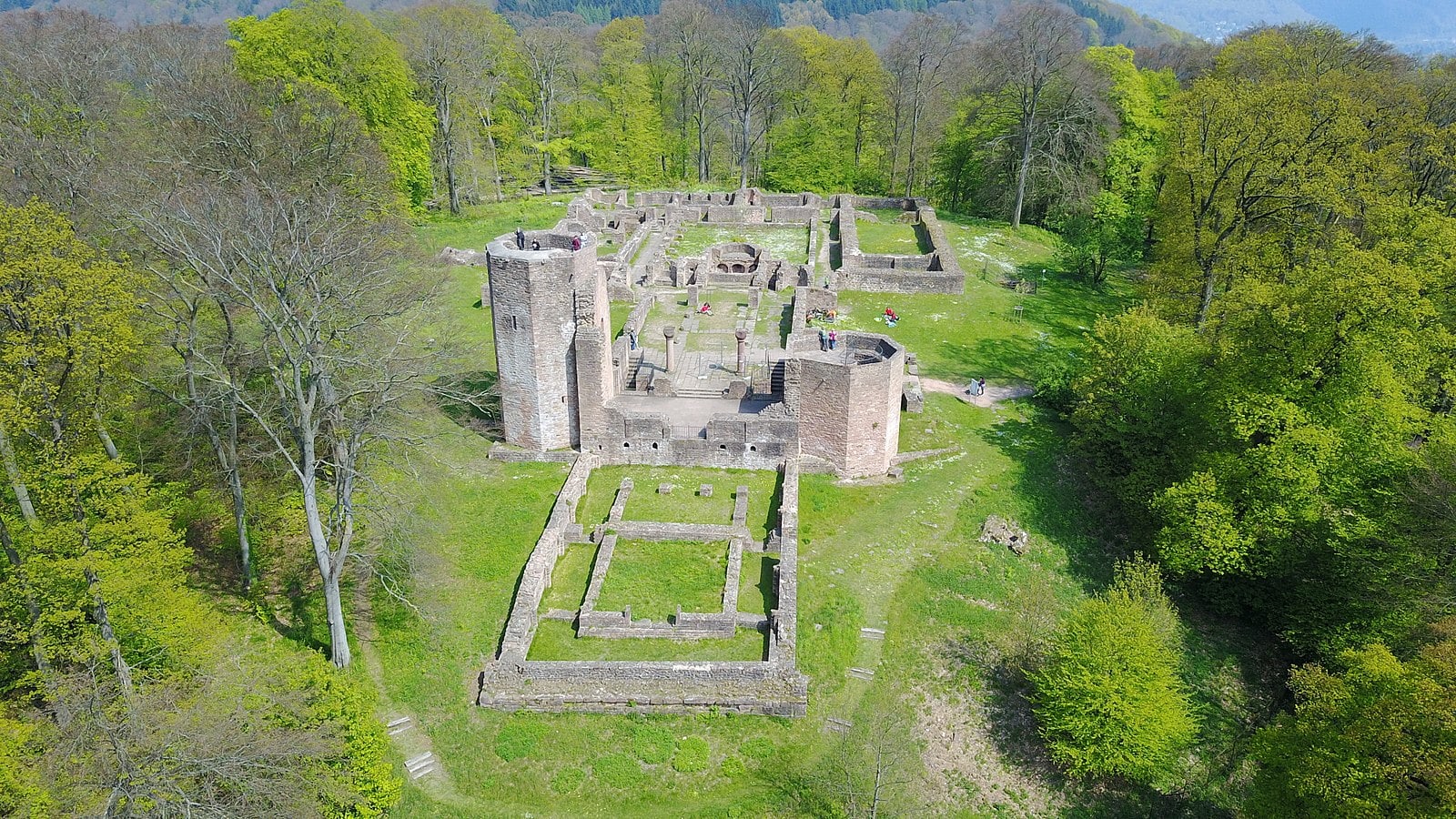Dive into the history of Heidelberg
St Michael’s Monastery in Heidelberg is a beautiful and historic monastery ruin that is definitely worth a visit. Just like the Thingstätte, the monastery of St Michael is located on the Heiligenberg, the second largest mountain in Heidelberg. The monastery was originally founded in the 14th century by the Order of St Michael and has a rich history that spans centuries.
The once magnificent monastery once formed the top of the Heiligenberg and its two towers offered a unique view over the Rhine plain.
In addition to its idyllic atmosphere, the Michaelskloster also looks back on a rich history. The monastery was a center of learning and scholarship in the Middle Ages and was home to many important figures, including the philosopher and theologian William of Ockham. The monastery also played an important role in the history of the city of Heidelberg, and was a center of power and influence for centuries.
Today, St. Michael’s Monastery is open to the public and offers visitors the opportunity to explore the foundation walls of the place of worship and learn more about its history.
In addition to its architectural and historical significance, St. Michael’s Monastery also offers a peaceful and tranquil atmosphere for visitors to enjoy. The beautiful gardens and peaceful surroundings of the monastery provide the perfect setting for a nice walk or a quiet picnic.
History of the monastery
The place of worship was already used by Christians in the 7th century, as evidenced by Merovingian burials. At that time, Abbot Thiotroch, from the Benedictine monastery of Lorscher, took over the building and expanded the complex. Although a monastic building is mentioned in the Lorsch Codex of 870, this cannot be confirmed archaeologically and may represent a retrospective of the later founding of the monastery.
Only in 1023 did Abbot Reginbald rebuild the foundation remains of the cult site. Abbot Frederick of Hirsau was buried in the abbey in 1070 and his tombstone can still be found in the crypt today. When the monastery was rebuilt, a water pipe was built from the spring at the White Stone to near the monastery, replacing the decaying Bittersbrunnen as the main source of water at Heiligenberg.
In addition, there are archaeological traces of fire from the time when the Electoral Palatinate and the Electorate of Mainz participated in the reconstruction. In 1503, the collapse of a bell tower of St. Michael’s Basilica was confirmed, and three monks are said to have died in their bedrooms.

Source: Areuland, unmodified, Creative Commons license: Areuland – Sharing under the same conditions 4.0 international
Architecture
Predecessor buildings of the Michaelskloster already existed in Celtic times. The area of the basilica of St. Michael forms the highest point in the double ring wall system of the Heiligenberg. Under the ruins of the cathedral still a Roman place of worship is provable, which must have been at that time very well-known in the region.
.
The Michaelskloster is considered one of the most important historical landmarks of Heidelberg, and it’s one of the most important monasteries of the Rhine valley and a popular destination for tourists and history buffs. At that time, the two towers adorned the top of the Heiligenberg. The top of one tower was probably visible from afar. Today, only parts of those towers are left but they are still accessible. One of the two towers is still over 10 meters high and offers a great view.
Even though the foundation walls and floor plan are still clearly visible and the monastery complex of Saint Michael can still be well imagined, it is a pity that there has never been a reconstruction of the remains. For centuries, the monastery, which is also called Michael’s Basilica, adorned the Heiligenberg and was known in Germany for the unique location on the Heiligenberg and the impressive monastery complex.
Approach
The monastery of St. Michael is only accessible by car or on foot. By car, the trip takes about 30 minutes from the city center, as you have to make a small detour via Ziegelhausen. On foot, the walk takes about 40-60 minutes depending on your pace.
The advantage of visiting on foot is that you walk along a nice hiking trail in the woods and can visit some other sights along the way. For example, you can walk a short distance along the famous Philosopher’s Path and take a look at the other side of the Neckar, marveling at the Königstuhl and the majestic Heidelberg Castle. In addition, you can visit the nearby Thingstätte or the Heidenloch.
.
So it is recommended to do the hike if you want to get more of Heidelberg’s nature and keep yourself fit.
Summary
Overall, the Michaelskloster, or the ruins of it, is a must-see for anyone visiting Heidelberg. The rich history and beautiful surroundings make it a true gem of the city and well known throughout Baden-Württemberg.
.
Whether you are an architecture lover, interested in history or just looking for a quiet place to explore, remains of the monastery and the view from the tower of the beautiful Rhine plain will surely impress you. Even though a majestic monastery was once enthroned on the site at Heiligenberg and now it is only a ruin, it is impressive to imagine the dimensions that the Michaelskloster must have had back then.